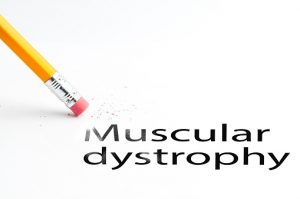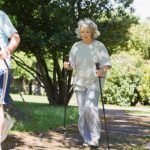 Muscular dystrophy treatment with muscle damage repair shows promise. Muscular dystrophy is a group of diseases that cause progressive muscle weakness and loss of muscle mass. Abnormal genes interfere with the production of proteins needed to make healthy muscles.
Muscular dystrophy treatment with muscle damage repair shows promise. Muscular dystrophy is a group of diseases that cause progressive muscle weakness and loss of muscle mass. Abnormal genes interfere with the production of proteins needed to make healthy muscles.
There are different types of muscular dystrophy. In some, symptoms present themselves in childhood, and in others symptoms only emerge in adulthood. Over time, muscular dystrophy can impair a person’s ability to walk. Some people may have difficulties swallowing or breathing.
Advertisement
There is currently no cure for muscular dystrophy, but treatments can help manage the condition and slow down its progression.
Potential muscular dystrophy treatment directly targets muscle repair instead of the underlying genetic defect
A new potential muscular dystrophy treatment directly targets muscle repair instead of the underlying genetic defect. The new treatment comes from researchers at the University of Michigan who discovered that mice missing a critical calcium channel inside the cell – TRPML1 – showed muscle defects similar to those with muscular dystrophy. Although the mice did not develop the defect found in muscular dystrophy, they developed muscular dystrophy-like characteristics.
When the researchers increased the calcium channels, the condition improved.
Biologist and lead researcher Haoxing Xu said, “The hope is that the same calcium channel will work in people with muscular dystrophy.”
Future plans include developing specific treatments for targeting calcium channels to boost activity of TRPML1.
Muscular dystrophy treatment: Gene helps repair muscle damage
Another study found that a gene could help repair muscle damage in muscular dystrophy. BMI1 gene has been previously linked with the body’s ability to regenerate muscles, and researchers from Queen Mary University of London found that it’s possible to manipulate the activity of the gene to enhance the regeneration of dystrophic muscles. The study was conducted on mice, and the researchers found that when BMI1 was manipulated, the mice were able to run on a treadmill faster and for longer periods of time.
Lead author Professor Silvia Marino said, “This study has given us the first ‘proof of concept’ that harnessing the gene BMI1 can significantly enhance the regeneration of dystrophic muscles to a level where strength is visibly improved. We plan to continue our research and hope to establish whether this concept can be successfully applied to patients with muscular dystrophy, but possibly other degenerative conditions or even traumatic muscle damage.”
Other treatment options for muscular dystrophy
 Traditional treatment options for muscular dystrophy include medications, therapy, and surgery. Common medications are corticosteroids and heart medications as muscular dystrophy can negatively impact the heart.
Traditional treatment options for muscular dystrophy include medications, therapy, and surgery. Common medications are corticosteroids and heart medications as muscular dystrophy can negatively impact the heart.
Physical therapy utilized for muscular dystrophy includes a range of motion exercises, stretching, regular exercise, wearing braces to offer support, the use of mobility devices like canes, and breathing assistance devices as the ability to breathe with the progression of muscular dystrophy becomes more difficult.
Surgery is only required as an option to correct spinal curvatures that could ultimately lead to breathing difficulties.
Tests to diagnose muscular dystrophy
To confirm a diagnosis of muscular dystrophy, there a number of tests your doctor can perform, including:
- Enzyme assay: measuring elevated levels of creatine kinase
- Genetic testing: checking for genetic mutations
- Heart monitoring
- Lung monitoring
- Electromyography: a needle is inserted into the muscle to measure electrical activity
- Biopsy: a portion of the muscle is removed and examined under a microscope
The process of diagnosing muscular dystrophy includes investigating symptoms, looking at a patient’s family history of muscular dystrophy, a physical examination, blood tests, electrical tests on nerves and muscles, and muscle biopsy, along with any of the abovementioned tests that may be required.
Related Reading:
Spinal muscular atrophy cause uncovered by stem cell research
The cause of spinal muscular atrophy, a condition that leads to muscle weakness, has been uncovered by stem cell research. The findings come from researchers at the Advanced Gene and Cell Therapy Lab at Royal Holloway. The researchers used stem cell techniques to get a better understanding as to why some cells are at a higher risk of degenerating in spinal muscular atrophy than others. Continue reading…
Advertisement
Myasthenia gravis, a neuromuscular disease, causes voluntary muscle weakness and fatigue
Myasthenia gravis, a neuromuscular disease, causes voluntary muscle weakness and fatigue. Myasthenia gravis is the weakness and rapid fatigue of voluntary muscles caused by the breakdown of the communication between nerves and muscles. Myasthenia gravis commonly affects women under the age of 40 and men over the age of 60. There is no cure for the condition, but treatments can aid in symptom management. Continue reading…
Sources:
http://www.mayoclinic.org/diseases-conditions/muscular-dystrophy/basics/definition/con-20021240
http://ns.umich.edu/new/releases/22370-muscular-dys,statinstrophy-repair-the-muscles-not-the-genetic-defect
http://www.qmul.ac.uk/media/news/items/smd/146063.html
http://www.mayoclinic.org/diseases-conditions/muscular-dystrophy/basics/treatment/con-20021240
http://www.medicalnewstoday.com/articles/187618.php?page=2
http://www.nhs.uk/Conditions/Muscular-dystrophy/Pages/Diagnosis.aspx
